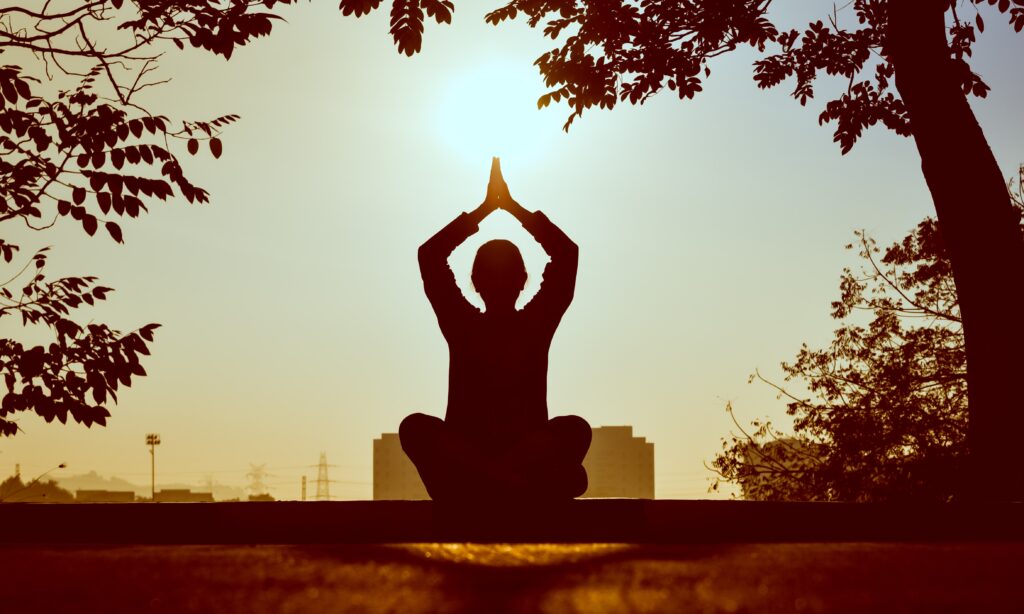Yoga is a mind and body practice that originated in India thousands of years ago. It combines physical postures, breathing exercises, and meditation or relaxation. Yoga has many benefits for both physical and mental health.
Physical benefits of yoga:
- Improved flexibility – Yoga can help by stretching the muscles and connective tissues. This can help to improve the range of motion and make everyday activities easier.
- Increased strength – Yoga can help by engaging the muscles in a variety of ways. This can help to improve overall fitness and reduce the risk of injuries.
- Reduced stress – Yoga can help by teaching you how to relax and focus on the present moment. This can lead to a number of benefits, such as improved sleep, better concentration, and reduced anxiety.
- Improved balance – Yoga can help by challenging the body to maintain various postures. This can help to reduce the risk of falls, especially as you get older.
- Finally Weight loss – Yoga can help by burning calories and increasing muscle mass. However, it is important to note that yoga is not a substitute for a healthy diet and regular exercise.
Mental benefits of yoga:
- Reduced anxiety – Yoga can help by teaching you how to relax and focus on the present moment. This can lead to a number of benefits, such as improved sleep, better concentration, and reduced anxiety.
- Improved mood – Yoga can help by releasing endorphins, which have mood-boosting effects. This can help to reduce symptoms of depression and anxiety.
- Increased self-awareness – Yoga can help you to become more aware of your body and mind. This can help you to better understand your emotions and reactions and to make healthier choices.
- Finally Improved focus – Yoga can help by teaching you how to focus on the present moment. This can help you to be more productive and less likely to be distracted.

How to incorporate yoga into your daily routine:
If you are new to yoga, it is a good idea to start with a beginner class. You can find yoga classes at most gyms, studios, and community centers. Once you have learned the basics, you can start practicing yoga at home.
There are many different ways to incorporate yoga into your daily routine. You can practice for 10-15 minutes a day or do longer sessions a few times a week. You can also practice yoga in the morning, afternoon, or evening, depending on your schedule.
If you are short on time, you can try a quick yoga routine that focuses on a few key poses. Or, you can try a yoga video that is designed for beginners.
No matter how you choose to practice yoga, the important thing is to find a routine that works for you and stick with it. With regular practice, you will start to see and feel the benefits of yoga.
Here are some tips for getting started with a yoga practice:
- Find a beginner class – If you are new to yoga, it is a good idea to start with a beginner class. This will give you the opportunity to learn the basics of yoga in a safe and supportive environment.
- Start slowly – If you are not used to exercising, start slowly and gradually increase the amount of time you spend practicing yoga.
- Listen to your body – It is important to listen to your body and not push yourself too hard. If you are feeling pain, stop the pose and rest.
- Last, Be patient – It takes time to learn and master yoga poses. Don’t get discouraged if you don’t get it right away. Just keep practicing and you will eventually see improvement.
I hope this blog post has given you some information about the benefits of yoga and how to incorporate it into your daily routine. If you are interested in learning more about yoga, there are many resources available online and in libraries. You can also find yoga classes at most gyms, studios, and community centers.


